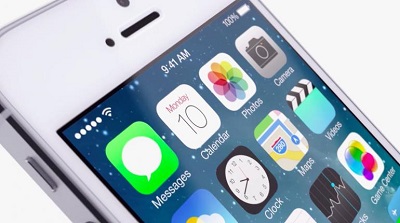Believe it or not, Apple and Microsoft (News  - Alert) are working along the same lines in approaching the smartphone market. Both companies want to expand market share beyond a currently saturated high/middle market and to make better margins per unit. Microsoft has spent more, but is likely to ultimately gain more than Apple's fumbling attempt with the iPhone (News - Alert) 5C.
- Alert) are working along the same lines in approaching the smartphone market. Both companies want to expand market share beyond a currently saturated high/middle market and to make better margins per unit. Microsoft has spent more, but is likely to ultimately gain more than Apple's fumbling attempt with the iPhone (News - Alert) 5C.
The Apple iPhone 5C is the company's first attempt to produce a lower-cost smartphone. Promoting colorful plastic case options harkens back to 1998 and the introduction of the iMac G3. In both cases, the company emphasized design, simplicity, and a rainbow of options. The iMac was positioned as a mass market (consumer) option and delivered substantial profits back to the company during its run.

Image courtesy Shutterstock
Analysts expect Apple (News  - Alert) to make good margins on the lower-cost iPhone 5C, but I'm not sure that the pie will be as sweet as expected. The price difference at launch between an iPhone 5C and the upscale, all-metal 5S is only around $100 more on a two-year mobile contract deal, with the 5S delivering better photo capabilities, a faster CPU, and a motion processor that improves battery life and adds features to health and other apps. More specifically, a 5C runs $99 on a two-year contract or $549 unlocked while the 5S is $199 with contract commitment or $649 unlocked.
- Alert) to make good margins on the lower-cost iPhone 5C, but I'm not sure that the pie will be as sweet as expected. The price difference at launch between an iPhone 5C and the upscale, all-metal 5S is only around $100 more on a two-year mobile contract deal, with the 5S delivering better photo capabilities, a faster CPU, and a motion processor that improves battery life and adds features to health and other apps. More specifically, a 5C runs $99 on a two-year contract or $549 unlocked while the 5S is $199 with contract commitment or $649 unlocked.
I suspect Apple will be ratcheting the price of the 5C downward, depending on availability and demand for the 5S. If the 5S in high demand, the company will keep prices high hoping enough buyers soak up the 5C rather than wait for a 5S. Otherwise, I expect Apple to lower the price on the 5C in about four to six months’ time because there are plenty of affordable Android alternatives floating around. The all-plastic case and other components suggest there's wiggle room on the price. Post-sale Apple profits come from the company's (outrageously priced) accessories and purchases of software and video through the App Store and iTunes.
Apple's efforts at a lower-cost offering while making more money per unit shouldn't be a new concept. Microsoft's $7.2 billion purchase of Nokia (News  - Alert) is the ultimate move in a company wanting to widen its customer base while collecting more per sale, if reports are to be believed.
- Alert) is the ultimate move in a company wanting to widen its customer base while collecting more per sale, if reports are to be believed.
Nokia and Microsoft have both suffered continued bashing for their joint (now united) smartphone offering based on Windows Phone (News - Alert). Microsoft's purchase of Nokia will reportedly raise profits per sale from under $10 per phone to more than $40 per phone. Skeptics will argue "So what, have you seen Windows’ Phone market share?" But being able make four times profit per unit isn't shabby.
However, the long play here isn't today's smartphones, but tomorrow's purchasers in the developing and still growing markets of Africa, Asia, and Latin America. Nokia knows how to do cheap and simple for the developing world. Microsoft could, with some forethought and a little effort, become the first tech brand newly minted consumers see and purchase, capturing market share in emerging markets before anyone in the neighborhood will ever be able to afford an iPhone 5C. Over the long run, having a strong presence in new markets might be worth multiples of the roughly $5 billion Microsoft paid for Nokia's phone business.
Edited by Rory J. Thompson
View all articles
 Internet Telephony Magazine
Click here to read latest issue
Internet Telephony Magazine
Click here to read latest issue CUSTOMER
CUSTOMER  Cloud Computing Magazine
Click here to read latest issue
Cloud Computing Magazine
Click here to read latest issue IoT EVOLUTION MAGAZINE
IoT EVOLUTION MAGAZINE




